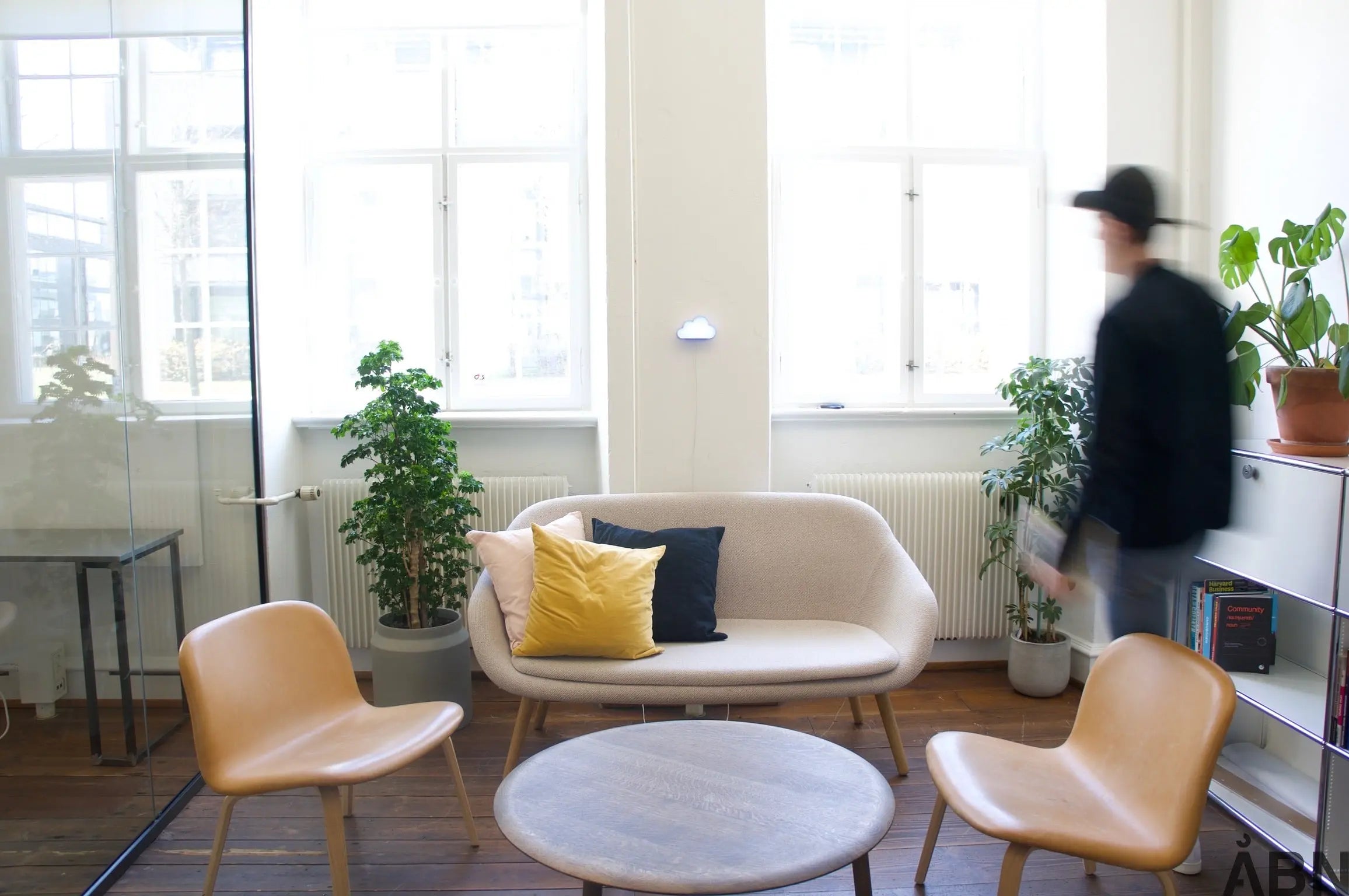A good indoor climate is not just one thing – it is a balanced cocktail of temperature, sound, air and light. When we design or renovate buildings, it is crucial that we have an eye for all four areas, which together create the framework for health, well-being and learning. But what do the four indoor climate areas actually cover – and how are they interconnected?
1. Thermal indoor climate: The temperature of well-being
The thermal indoor climate is about how we feel the temperature in a room. It is a fine balance between air temperature, radiant temperature (e.g. from cold walls), air movement (as drafts) and humidity. If the temperature is too high or low – or if there is drafts – it can cause discomfort, difficulty concentrating and lower performance.
An example: Imagine a classroom teacher standing in front of the blackboard in a room with large south-facing windows. The students are baking in the sun while the teacher is freezing in the shade. These are the kinds of imbalances that occur when thermal comfort is not considered in the design.
2. Acoustic indoor climate: When sound becomes noise
The acoustic indoor climate is not just about noise – it’s about how sound travels in the room. Noise level, reverberation time and frequency distribution all play a role. Loud noise can be stressful, while poor acoustics can make it difficult to hear and understand what is being said.
In classrooms, poor acoustics can mean that students with hearing loss or concentration difficulties miss important information. Or that teachers have to raise their voices all day – resulting in fatigue and hoarseness.
3. Atmospheric indoor climate: The air we don't see, but feel
Atmospheric indoor climate is about the quality of the air. Is there enough fresh air? Is the CO₂ level low? Are there particles, chemicals or moisture in the air that can be annoying or harmful? The answer depends on ventilation, building materials, cleaning – and behavior.
According to studies, up to 78% of classrooms without mechanical ventilation have too high CO₂ levels. This affects learning, concentration and health. And this is where solutions like ÅBN's SKYEN can make a difference: By visualizing the state of the air and activating simple behavioral changes.
4. Visual indoor climate: What we see – and what we feel
Visual indoor climate is about more than just brightness. It's about daylight, artificial light, glare and visibility. Light affects our circadian rhythm, our energy and our mood. Too little light causes fatigue. Too much – or the wrong light – can dazzle and annoy.
Large windows can provide beautiful daylight and views, but also overheating and glare. Therefore, it requires consideration and solutions such as sun protection, placement of workplaces and adjustable lighting.
When one area affects the others
The four indoor climate areas are closely related. An improvement in one area can worsen another. For example, large glass areas can improve the visual indoor climate – but pose challenges with temperature and acoustics. Therefore, a good indoor climate requires a holistic approach – exactly as ÅBN works with in both technology and behavior.
Conclusion: Indoor climate is not a luxury – it is a necessity
A good indoor climate is not something you notice when it's there. It's something you miss when it's missing. And the consequences can range from lower productivity to increased sick leave and poor well-being.
That's why we need to talk more about indoor climate. And that's why we need to take responsibility – as a developer, municipality, teacher or student – for creating spaces we actually want to be in.
Would you like to know more about how ÅBN can help balance the four indoor climate parameters in your building?
👉 Contact us here







